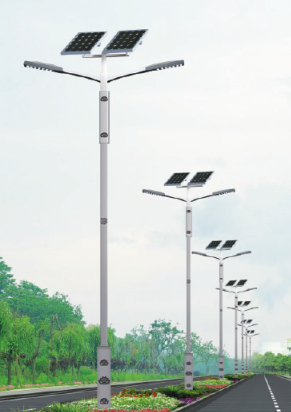The Japanese print media Nikkei Business pointed out that the business cycle of Japanese manufacturing has almost taken shape. It has always led the world in the early stages, and it has been caught up by the emerging countries in the mid-term and it has finally failed. For example, semiconductor DRAM, liquid crystal television (LCDTV), DVD player, lithium battery for digital home appliances, car navigation, etc., all fall into this failure mode.
Asakawa Ozawa, a researcher at the Tokyo University’s manufacturing management research center, pointed out that the speed of technology circulation is accelerating and that Japanese manufacturers have an advantage over time. Taking DRAM as an example, the world market share of Japanese products fell from 60% to 30% in 1991-1999, which took 8 years, but the world market share of solar photovoltaic cells in Japan fell from 50% to 25%, only Between 2004 and 2006, it was only 2 years.
Why do emerging countries' solar photovoltaic cells quickly catch up with Japan with excellent technology? This is almost a common question for Japanese manufacturers. "Nikkei Business" pointed out that some of China's domestic solar photovoltaic cell maker Wuxi Suntech's factories have already begun production using German-made and Japanese-made production equipment. Even if Japan and Germany keep their core technologies confidential, production equipment still has traces. Follow. Chinese domestic manufacturers have been exploring the core technologies of various countries from their production facilities and have virtually increased their technological competitiveness.
If Japan's solar photovoltaic battery plant adopts a method of leaving home and making cars behind closed doors, there is no risk of outflow of equipment, but this will also increase production costs. Many Japanese manufacturers have asked overseas countries to produce solar photovoltaic cells in order to reduce production. The relevant company officials said that even if they applied for a patent, it would be difficult to prevent the outflow of core technologies via production facilities. For domestic manufacturers in China, obtaining production equipment from other countries can not be achieved in one go, but it will inevitably reduce the difficulty of mass production.
On the other hand, the core technology of Japanese manufacturers faces bottlenecks, and it also makes it difficult to raise prices. In recent years, the conversion power of solar photovoltaic cells has almost reached the limit, and there has been no significant increase. Although Sharp tried to develop a “quantum solar photovoltaic cell†by cooperation with Arakawa Ta Yoshihiko, the Institute of Production Technology of Tokyo University, the conversion power is expected to increase to 80%, but Arakawa also Frankly, it was not until 2022-2032 that products could be put to practical use.
With no significant technological breakthroughs, China's domestic solar photovoltaic cell factories, which have price advantages, are likely to snatch customers from Japanese manufacturers, leaving Japanese manufacturers’ market share to continue dropping.
Not only that, Japanese companies insist on vertical integration, do not want to adopt the horizontal production mode of operation, and it is more likely that the overall solar photovoltaic cell industry will repeat the same mistakes as flat-panel television products. At present, most Chinese domestic manufacturers have adopted the horizontal division of labor model, but Panasonic, the Japanese electronics manufacturer, still announced in December 2011 that it will set up a factory in Malaysia to produce products in the vertical integration mode.
Ogawa pointed out that the main reason for Japanese manufacturers insisting on the vertical integration of solar photovoltaic cells is that when Japanese manufacturers started to develop the product, the industrial chain is still not mature, so the big manufacturers can only start manufacturing by themselves, and as a result, many related manufacturers are extended, and today they cannot Effortlessly disregard, how should also take into account the overall business operations.
Under this circumstance, the only way for Japanese companies to resist courtesy is to support the industry and maximize downstream sales. For example, Panasonic promotes solar photovoltaic cells in conjunction with other energy-saving products, Mitsubishi Electric has started social infrastructure, and established solar power plants. However, this is still a considerable risk. After all, other manufacturers may not use Japanese products to build solar power plants or sell power generation systems. It is likely that low-priced Chinese domestic goods will be selected.
In the past, Japan’s flat-screen television business suffered huge losses due to its excessive persistence in producing its own core components. Panasonic set up plasma panel factory, Sharp set up LCD panel factory, all paid attention to hundreds of billions of yen, and finally lost to South Korea and Taiwan adopting low-cost LCD panel production, resulting in Sharp and Panasonic's flat-panel TV products are competitive Not as good as before, in the world market suffered Waterloo.
Japan's solar photovoltaic battery products are facing a critical moment. If they cannot effectively resist the competition of overseas manufacturers, it is likely that a shuffle effect will eventually occur and the competitiveness will continue to decline.
The road lamp lighting is a main light source configuration is most widely used in Road Lighting engineering,mainly is suitable for the city roads,lans wide road lighting and decoration,is the way the functional lighting products. Our company's road lighting products include Lotus Combination Lamp,High-low arm High-power LED lamps,Lift type High-mast lamp,Integrated Solar road light.




The main road generally use high-quality steel manufacturing,stable structure and generous,illumination power and the main rod highly visible road width of scientific allocation.To ensure that the surface brightness,no glare,uniform illumination.Long distance continuous configuration,can describe the spatial light continuous beauty,make city roads at night more grandeur.
Road Lighting Series,Road Lighting,Road Lighting Decoration,Road Lighting Book
Jiangsu chengxu Electric Group Co., Ltd , https://www.satislighting.com
